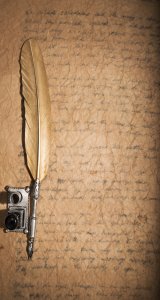Using Bread Machine Mixes in Your Oven
You don't have to own a bread machine to enjoy the variety of bread machine mixes. And you don't have to make blocky, square loaves with holes in the bottom. You can make wonderful rolls, traditional sandwich loaves, and artisan loaves with or without the aid of a bread machine. In this article, we will tell you how to convert any bread machine mix into great breads by hand, with your stand-type mixer, or with your bread machine.
First, we'll show you how to bake tempting breads from bread machine mixes without a bread machine. We'll use our Sour Cream Onion Bread Mixes because we like this onion bread so much (and we get to enjoy it when we�re through with this demonstration). We like to make more than one loaf when we bake so we'll use two mixes and combine them. (When we have more bread than we can use, we slice and freeze it.) We'll mix these in a bowl instead of using our stand-type mixer and bake one in a pan and make one into a classy artisan loaf just to demonstrate versatility.
To mix in a bowl, empty the mixes into a large bowl. Mix the yeast in the warm water and add the mixture to the bowl. Add melted butter. (Be careful to let the butter cool below 140 degrees so that it will not kill the yeast.) Stir with a spatula until the mass starts to stick together. When you cannot comfortably stir any further, dump the dough onto a floured surface and begin kneading. (The dough will likely be slightly wetter than you can handle by hand. A tablespoon or so of flour on the counter should make it just right. Do not add too much flour--a softer dough will rise better.) Knead the dough until it is elastic--ten to twelve minutes. Place it in a greased bowl, cover it, and let it rise until doubled--about an hour.
To mix using a stand-type mixer, empty one of the mixes into the mixer bowl (or half of one mix if you are baking a single loaf). Add the yeast and the water and mix with your dough hook on medium speed for 40 seconds--to start to dissolve the yeast. Add the other mix (or the rest of the mix if you are baking one loaf) and the melted butter and continue mixing at medium speed for another four minutes to develop the gluten. If the dough is too sticky, add one tablespoon flour. Place the dough in a greased bowl, cover it and let it rise until doubled--about an hour.
Once the dough has risen, you may form the dough into rolls, a pan-shaped loaf, or a free-standing loaf.
To form a free-standing loaf, pull the dough around the center creating a taut outer skin and a well-shaped loaf. Pinch the seams together on the bottom and place the loaf on a baking sheet that has been greased and sprinkled with cornmeal. Cover the loaf and let it rise until doubled--about an hour.
To form a pan-shaped loaf, pull the dough around the center to form a taut skin and place the loaf in a large greased 5 x 9-inch loaf pan. Cover and let rise.
To form rolls, cut away egg-sized chunks of the risen dough and pull the dough taut around the center of the roll as you would a loaf, pinching the seam on the bottom. Place the rolls on a greased pan, cover, and let rise. One bread machine mix should make a dozen medium-sized rolls.
Most artisan loaves are baked with a thicker, chewier crust than pan-shaped loaves. To create these crusts, the bread is baked in a steamy environment and it is baked to a higher internal temperature in order to drive more moisture from the loaf. (Moisture trapped in the interior of the loaf will migrate to the crust and soften it.) The internal temperature of crusty breads should reach 210 degrees. If you would like to bake a crusty, artisan bread, click here for instructions.
Bake the pan-shaped loaf at 350 degrees for 30 minutes or until done. The interior of the loaf should be at least 190 degrees.
Bake rolls for 18 to 20 minutes at 350 degrees or until done.
If you would like to try baking these great breads from our Bread Machine Mixes, you can do so for as little as $2.04 per mix.
Baking Hint: The bronze finish that you see on the loaves in this picture was created with an egg yolk wash. Simply mix one tablespoon warm water with one egg yolk and gently brush the wash on the loaf just before baking.
For more articles like this visit The Baker's Library.
© 2004 The Prepared Pantry
|
|
|
|
|
|
|
|
|
|
|


All About Baking: Quick Breads
The Versatile Quick BreadIt's no wonder quick breads are so... Read More
Peppercorns & Ways To Use Them
New and exciting varieties of peppercorns are becoming available to... Read More
Kitchen Canister Sets - How to Beautify Your Kitchen
Kitchen canister sets are a great way to accent your... Read More
Hot Apple Pie - The American Apple Pie Legacy
While each country might have its own preferred style, "American... Read More
Picture Perfect Bread
The secret-at least most of it-is in the rise. The... Read More
Cut The Take Out
A long hard day at work. You get home and... Read More
Once-A-Month-Cooking: How to Make Your Plan Work
As one of the oldest children in a family of... Read More
Whats a Pan Dowdy?
Cobblers and dowdies, crisps and crumbles, buckles and betties-what are... Read More
Whisk Your Way To a Perfect Meal Every Time!
The whisk. A true versatile cooking utensil. Whisks come in... Read More
10 Deadly Bacteria That Can Get In Your Food (And How To Stop Them From Getting There)
Thousands of types of bacteria are naturally present in our... Read More
What is a Serving Size?
Have you ever wondered how much a serving really is.... Read More
How to Cook a Lobster
French chefs plunge them into boiling water; English ones, in... Read More
How To Eat Fresh Vegetables ? Ideas for Working More Veggies Into Your Diet
Fresh, uncooked veggies are so healthy and it's important to... Read More
Prepare the Best Garlic Mashed Potatoes
Would you like to prepare the best Garlic Mashed Potatoes... Read More
Fine Tuning Bread Machine Mixes
Sometimes bread machines can be tricky. We were trying to... Read More
How to Bake: Muffins (with recipes)
Muffins are a mainstay around our house. They are as... Read More
The Art of the Marinade
It's a sad fact that these days it has become... Read More
Kitchenaid Stand Mixers ? A Kitchen Work Horse
Kitchenaid stand mixers are very popular in today's kitchens and... Read More
Reductions: Proving Less is More
Any liquid can be reduced just by heating it -... Read More
Cool Summertime Cooking
Summertime--and the living is easy! But the kitchen is hot!!... Read More
Working with Eggs
Bad eggs are rare but they do occur. Crack eggs... Read More
Herbs and Spices - the Essence of Flavor
In any number of cookbooks and recipes you will find... Read More
Fruit Cake
Are you the fruit cake in your family? Before you... Read More
Grill Your Corn for Maximum Flavor
There's two basic theories on grilling corn. Some people prefer... Read More
Outdoor Chefs Choose Gas Grills
How many of you remember dad trying to get the... Read More
About Baking: Eight Tips for Perfect Pancakes
Pancakes are easy and almost foolproof. But there are some... Read More
How to Peel Almost Anything
The great English cook Prue Leith once famously remarked "life's... Read More
Old-Fashioned Taffy Pull Party--How to Host Your Own
Want a unique party idea for your child's birthday-or even... Read More
50% Less Cooking
50% Less Cookingwithout hitting the fast food button! Don't you... Read More
Chinese Cooking Technique: Thicken
"Thicken", or "Thickening" is a very common technique used in... Read More
How to Make Homemade Ice Cream (Without an Ice Cream Maker!)
COLFAX, WISCONSIN - June is Dairy Month and what better... Read More
10 Mind-Easing Ways To Make Sure Your Childs Bag Lunch Is Safe
Perishable food must be kept cold while commuting via bus,... Read More
Understanding Baking: How Yeast Works
Did you ever wonder why flour tastes like sawdust but... Read More


Cooking Filet Mignon
Filet mignon is French, of course, with filet meaning "thick... Read More
Kitchen Canister Sets - How to Beautify Your Kitchen
Kitchen canister sets are a great way to accent your... Read More
Low-Budget Meals In a Minute
Ever go home and look in the fridge only to... Read More
Ten Proven Tips to Buy the Best Meat Available
Ten Proven Tips to buy the Best Meat AvailableAs you... Read More
Troubleshooting Machine Bread
Bread machines-wonderful inventions that they are-don't think very well. You... Read More
Understanding Baking: How Yeast Works
Did you ever wonder why flour tastes like sawdust but... Read More
Chinese Cooking Technique: Deep Fry
There are usually 2 ways of deep frying in Chinese... Read More
Rice Cookers - Perfect Rice Every Time
Love fluffy cooked rice but dislike the preparation time and... Read More
What You Need in a Gourmet Kitchen
The best way to decide what you need in your... Read More
Do a Dry Rub First
The debate on ribs has ended in my home. After... Read More
How to Bake: Bread on the Grill
One of the slickest tricks we know is baking bread... Read More
Buying, Storing, and Preparing Apricots
When buying apricots, always look for those that are firm,... Read More
How to Bake: Muffins (with recipes)
Muffins are a mainstay around our house. They are as... Read More
Two for One Dinners: Beef
If you find leftovers boring, uninviting or downright "yuck," then... Read More
Little-known Tips for Easy Holiday Baking
Are you wondering if you have the time to bake... Read More
High Altitude Baking - A Cooks Guide
High altitude baking can be a real adventure for the... Read More
Wok this Way! (Part 1 of 5)
IntroductionWoks have been synonymous with Chinese cooking since the emergence... Read More
Grill Your Corn for Maximum Flavor
There's two basic theories on grilling corn. Some people prefer... Read More
Weber Grills Reviewed: Quality that Lasts
Barbecuing has long been a favorite pastime for many and... Read More
The Wonderful Wok: Stir Frying Basics
Want to enjoy the tantalizing taste of Asian food at... Read More
Fine Tuning Bread Machine Mixes
Sometimes bread machines can be tricky. We were trying to... Read More
Make It With Mint
It wouldn't be summer without fresh mint in pots on... Read More
How to Make a Cajun Roux
The process of preparing Cajun food is in no way... Read More
Modifying Your Recipes, More or Less
You just found that great recipe that you have been... Read More
Storing Fats and Oils
The human body requires the intake of six types of... Read More
Baking Bread and Your Freezer
There's a lot of bread in our freezer. In our... Read More
Cut The Take Out
A long hard day at work. You get home and... Read More
10 Wide Open Tips For Food Safety In The Great Outdoors
Hiking, camping, and boating are good activities for active people... Read More
10 Smoky Tips To BBQ Food Safely
Cooking outdoors was once only a summer activity shared with... Read More
10 Convenient Ways To Eliminate Food Poisoning With Your Microwave
Microwave ovens can play an important role at mealtime, but... Read More
50% Less Cooking
50% Less Cookingwithout hitting the fast food button! Don't you... Read More
Picture Perfect Bread
The secret-at least most of it-is in the rise. The... Read More
Old-Fashioned Taffy Pull Party--How to Host Your Own
Want a unique party idea for your child's birthday-or even... Read More
Cooking Tips |